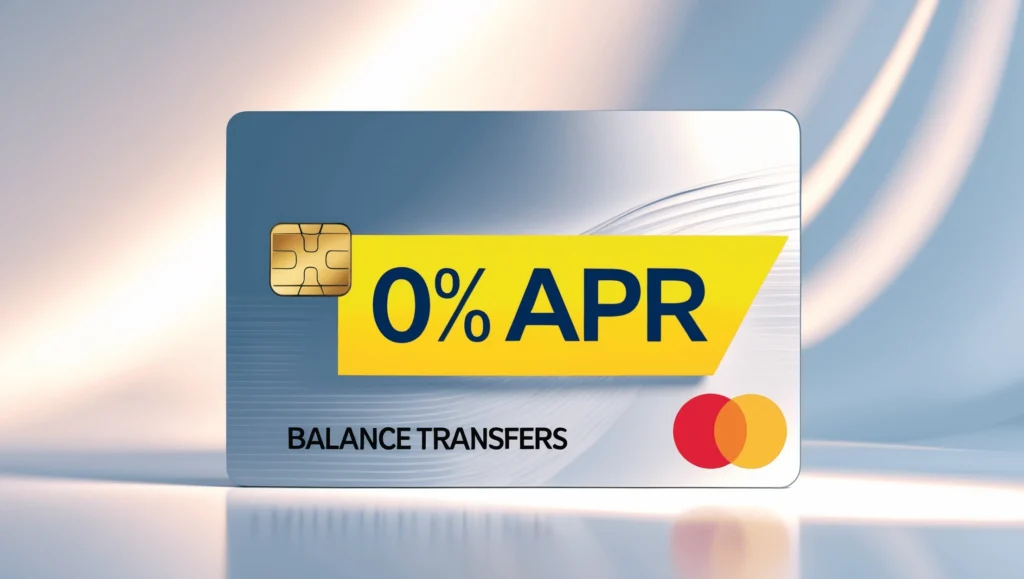Debt repayment can feel overwhelming, especially when trying to decide the best approach. Choosing the right financial tool is crucial to successfully managing and eliminating debt. Personal loans and credit cards are two popular options, but they work differently and suit different needs. Personal Loan vs. Credit Card options offer fixed repayment terms, while credit cards provide more flexible but potentially costlier solutions. Understanding the differences between these tools can help you make an informed decision that aligns with your financial goals.
For more information on how personal loans and credit cards work, visit resources like NerdWallet or Investopedia.
1: What is a Personal Loan and How Does It Work?
What is a Personal Loan?
A personal loan is a type of unsecured loan that individuals can use for various purposes, including debt repayment. Unlike credit cards, personal loans typically come with fixed interest rates, meaning your monthly payments remain consistent throughout the repayment period. These loans are provided by banks, credit unions, and online lenders, offering borrowers a predictable way to manage their finances.
Personal loans often have set repayment terms, usually ranging from 12 to 60 months. Borrowers agree to repay the loan in equal monthly installments until the full amount, including interest, is paid off. Because of this structured approach, personal loans can be an effective tool for managing large debts or consolidating multiple balances into one.
For more details, consider exploring this guide on personal loans.
Types of Personal Loans
There are two main types of personal loans: secured and unsecured.
- Secured Personal Loans: These require collateral, such as a car or savings account, to secure the loan. If you fail to make payments, the lender can seize the collateral. Secured loans often have lower interest rates, making them a more affordable option for borrowers with poor credit.
- Unsecured Personal Loans: These don’t require collateral, relying instead on your creditworthiness. They tend to have higher interest rates than secured loans, but they are the more common option for debt repayment since they don’t put your assets at risk.
Understanding the differences between secured and unsecured loans is crucial when deciding which option works best for paying off debt.
Pros and Cons of Personal Loans for Debt Repayment
Like any financial tool, personal loans have advantages and disadvantages that can affect your debt repayment strategy.
- Pros:
- Lower APR: Personal loans typically offer lower interest rates compared to credit cards, especially for borrowers with good credit scores.
- Fixed Monthly Payments: The consistency of fixed payments helps borrowers plan their budgets without surprises.
- Debt Consolidation: You can combine multiple debts into a single loan, simplifying repayment.
- Cons:
- Prepayment Penalties: Some lenders charge fees if you pay off your loan early.
- Credit Score Impact: Applying for a personal loan may cause a temporary dip in your credit score due to the hard inquiry.
- Qualification Requirements: Borrowers with lower credit scores may face higher interest rates or difficulty qualifying.
To better understand when to choose a personal loan over a credit card, check out this comparison on personal loan vs. credit card for debt repayment.

2. Understanding Credit Cards for Debt Repayment
How Credit Cards Work
Credit cards are financial tools that allow you to borrow money up to a certain limit, which is known as your credit limit. When you make purchases or pay bills with a credit card, you borrow funds that must be repaid within a specific billing cycle. If you don’t pay the full balance, interest is charged on the remaining amount.
A key factor to understand is credit utilization, which refers to the percentage of your credit limit that you are using. Maintaining a low credit utilization ratio can positively impact your credit score. Additionally, credit cards require a minimum payment each month, which is a small percentage of your balance. Paying only the minimum can lead to high-interest charges over time.
Some credit cards also offer a balance transfer feature. This allows you to move high-interest debt from one card to another, often with an introductory 0% APR for a limited period. This feature can be a strategic way to reduce interest costs temporarily while focusing on debt repayment.
For more information on how credit utilization affects your credit score, visit Experian’s guide on credit utilization.
Balance Transfer Cards as a Debt Tool
Balance transfer cards are specifically designed to help borrowers manage high-interest debt. These cards offer promotional periods, often ranging from 6 to 18 months, during which you can pay off transferred balances without incurring interest. This can provide significant savings and speed up your debt repayment plan.
However, there are conditions to consider. Most balance transfer cards charge a balance transfer fee, typically around 3% to 5% of the transferred amount. If you don’t pay off the balance within the promotional period, the regular APR will apply, which could be quite high.
For more details about balance transfer cards, check out NerdWallet’s guide to balance transfers.
Pros and Cons of Using Credit Cards for Debt Repayment
Using credit cards for debt repayment comes with both advantages and drawbacks.
Pros:
- Flexibility: Credit cards offer the ability to pay off debt at your own pace, provided you meet the minimum payment.
- Convenience: They are widely accepted and can be used for various financial needs, including emergencies.
- Promotional Offers: Balance transfer cards and rewards programs provide added benefits if used wisely.
Cons:
- High-Interest Rates: Most credit cards have higher interest rates compared to personal loans, making them costly for carrying long-term debt.
- Temptation to Overspend: The easy accessibility of credit can lead to overspending and accumulating more debt.
- Fees: Balance transfers and cash advances often come with additional costs, reducing their financial advantage.
In the Personal Loan vs. Credit Card debate, credit cards may be better suited for short-term debt or emergencies, while personal loans are often a better option for structured, long-term repayment plans. For more guidance, explore Bankrate’s tips on credit card debt management.
3. Key Differences Between Personal Loans and Credit Cards
When deciding between a personal loan and a credit card for debt repayment, it’s essential to understand their key differences. Let’s explore three important aspects: interest rates and APR, repayment terms, and their impact on your credit score.
Interest Rates and APR Comparison
Personal loans and credit cards come with different interest rates and APRs (Annual Percentage Rates). Personal loans typically have lower APRs compared to credit cards. For example, a personal loan may offer a fixed APR ranging from 6% to 36%, depending on your credit score and the lender.
In contrast, credit cards often come with variable APRs that can range from 15% to 30% or higher. High-interest rates make carrying a balance on a credit card more expensive over time. However, some credit cards, like balance transfer cards, offer 0% APR for an introductory period, making them appealing for short-term debt repayment.
Understanding these differences can help you decide which option aligns better with your financial goals. To learn more about managing APRs, visit this guide on debt repayment.
Repayment Terms and Monthly Payments
Repayment schedules also vary significantly between personal loans and credit cards. Personal loans have fixed repayment terms, usually lasting two to seven years. This means you’ll make equal monthly payments until the debt is fully paid off. Fixed terms provide predictability, which can be helpful for budgeting.
Credit cards, on the other hand, offer more flexible repayment options. You can pay only the minimum balance, a larger portion of the debt, or the full balance each month. However, paying only the minimum can lead to higher interest costs and prolong debt repayment.
Choosing between fixed loan payments and flexible credit card payments depends on your financial situation and ability to manage consistent monthly obligations.
Impact on Credit Score
Both personal loans and credit cards can affect your credit score, but in different ways. Personal loans are installment loans, meaning you borrow a lump sum and repay it over time. Successfully making on-time payments can boost your credit score and show lenders you’re a responsible borrower.
Credit cards, however, are revolving credit accounts. They impact your credit utilization ratio, which is the percentage of available credit you’re using. Keeping your credit utilization below 30% is crucial for maintaining a good credit score. Missing payments or maxing out your credit card can hurt your credit score significantly.
By comparing interest rates, repayment terms, and credit score impacts, you’ll have a clearer picture of whether a personal loan or credit card is better for your debt repayment strategy.

4. When Should You Choose a Personal Loan?
Debt Consolidation Needs
Personal loans are an excellent option for debt consolidation. If you have multiple high-interest debts, such as credit cards or payday loans, combining them into a single personal loan can simplify repayment. With a personal loan, you’ll have one monthly payment instead of managing several due dates and amounts. This streamlined process reduces the chances of missed payments, which can negatively impact your credit score. Additionally, personal loans often have lower interest rates compared to credit cards, making them a cost-effective choice for consolidating debt. For more tips on debt consolidation, check out resources from trusted financial institutions like Investopedia.
Lower Fixed Interest Rates
Personal loans usually offer fixed interest rates, which can be lower than credit card rates. A fixed rate ensures your monthly payments remain consistent throughout the loan term. This predictability makes it easier to plan your budget and avoid unexpected increases in payments. If you’re paying off a significant debt, a lower APR can save you money over time compared to a credit card with a variable rate. For a detailed comparison of rates, visit NerdWallet.
Long-Term Debt Management
Personal loans provide longer repayment terms, often ranging from two to seven years. This extended timeline allows you to spread out payments, making them more manageable for your budget. Unlike credit cards, which typically require higher monthly payments to avoid accruing interest, a personal loan offers a clear repayment plan. If you’re aiming for financial stability and need more time to pay off debt, a personal loan can be a smart solution. Understanding the differences between a personal loan vs. credit card can help you decide which fits your needs better.
By considering these factors, you can determine if a personal loan aligns with your financial goals. Always review loan terms and consult with a financial advisor if needed.
5: When Is a Credit Card the Better Option?
Credit cards can be a useful tool for short-term debt repayment, balance transfers, and emergency expenses. However, knowing when to use them is crucial for avoiding financial pitfalls. In this section, we’ll discuss the scenarios where a credit card might be the best choice over a personal loan.
Short-Term Debt Repayment
Credit cards are ideal when you need to manage smaller amounts of debt over a short period. If you’re facing a temporary cash flow issue or a small debt that you plan to pay off quickly, using a credit card could be an easy solution. Many credit cards offer a grace period on new purchases, meaning you can avoid interest if you pay the balance in full by the due date. However, be cautious—if you can’t pay off the debt within the grace period, high interest rates can quickly add up.
Using a Balance Transfer Card
If you already have a balance on a high-interest credit card, a balance transfer card can offer a great way to save on interest. Many credit cards provide introductory 0% APR offers for balance transfers, sometimes lasting as long as 12 to 18 months. This can allow you to pay down your debt without accumulating additional interest during the promotional period. Just be mindful of balance transfer fees and the APR that kicks in once the introductory period ends. If you use the balance transfer card wisely, it can be an effective tool for managing debt without taking on more financial strain.
Emergency Financial Needs
Credit cards also offer flexibility in emergency situations. If unexpected expenses arise—like a medical bill or car repair—a credit card can provide immediate access to funds. Unlike a personal loan, which often requires a lengthy approval process, credit cards offer quicker access to credit. However, this flexibility comes with a cost. Interest rates can be high if you don’t pay off the balance quickly, so it’s essential to have a plan in place for repayment.
In conclusion, while a personal loan may be better for long-term, larger debt consolidation, credit cards are a convenient option for short-term debt repayment, balance transfers, and emergency needs. Always consider your financial situation and repayment capacity before choosing between a personal loan vs. credit card for managing debt. For more advice on managing finances, check out this guide on balance transfers and interest rates.

Conclusion
In conclusion, choosing between a personal loan and a credit card for debt repayment depends on your unique financial situation. A personal loan can provide predictable, lower interest rates, making it ideal for consolidating debt or managing longer-term payments. On the other hand, a credit card, especially a balance transfer card, offers flexibility and may be a good short-term solution if you’re aiming to pay off debt quickly. It’s important to assess your financial goals and repayment timeline before deciding. Take the time to evaluate your options carefully. If you’re unsure, tools like Finley AI can help provide personalized advice based on your specific needs. Whether you’re considering a personal loan vs. credit card, make the choice that aligns with your financial strategy. For more information, explore resources and tools that guide debt management and financial planning.
